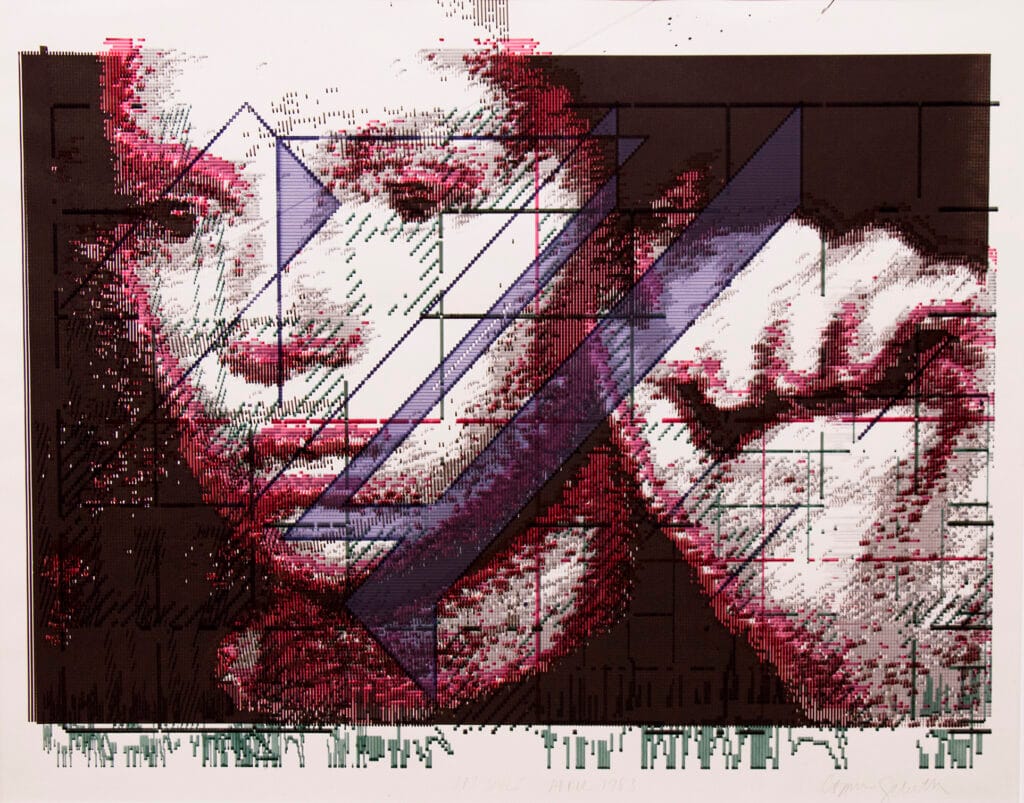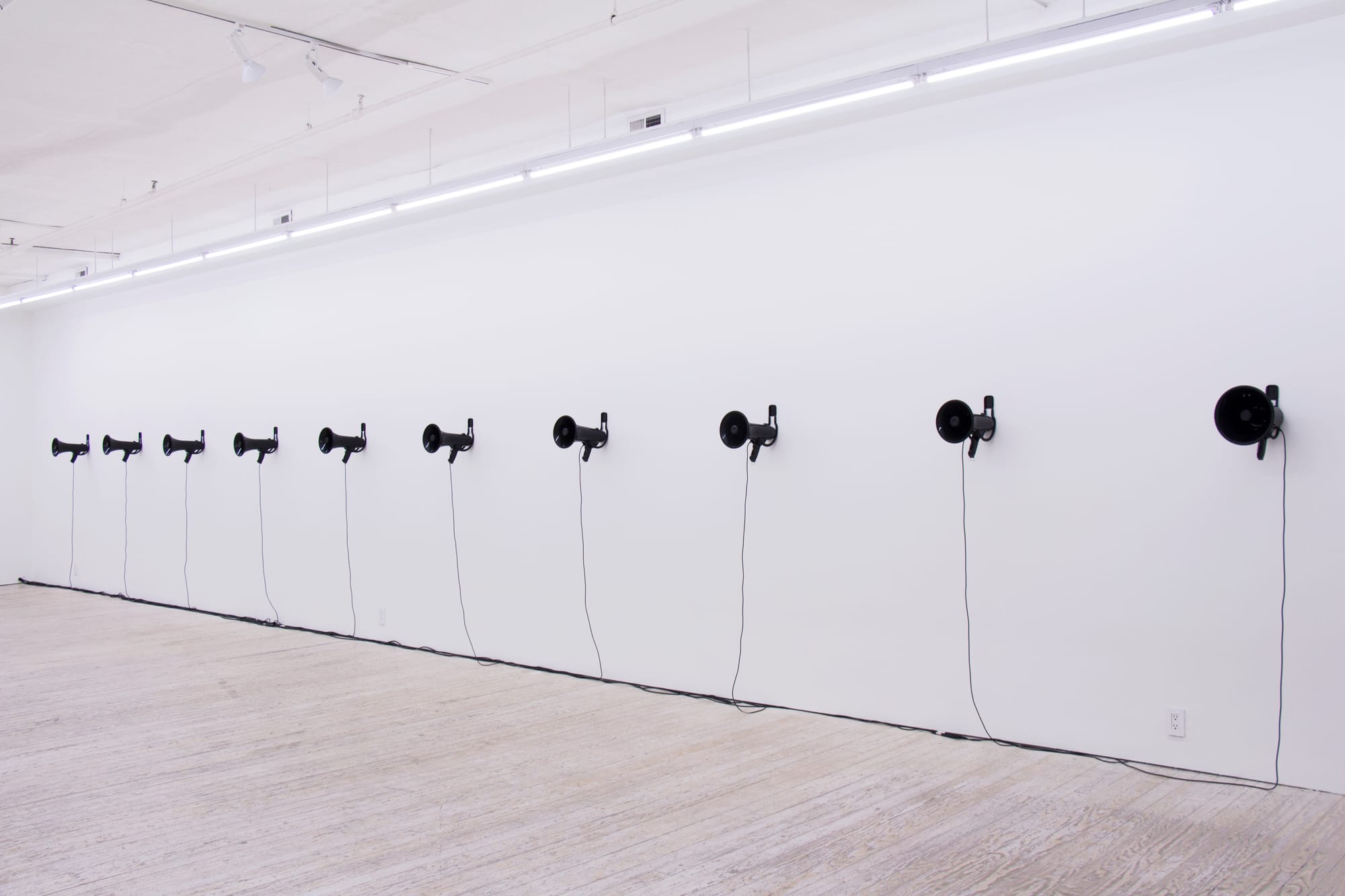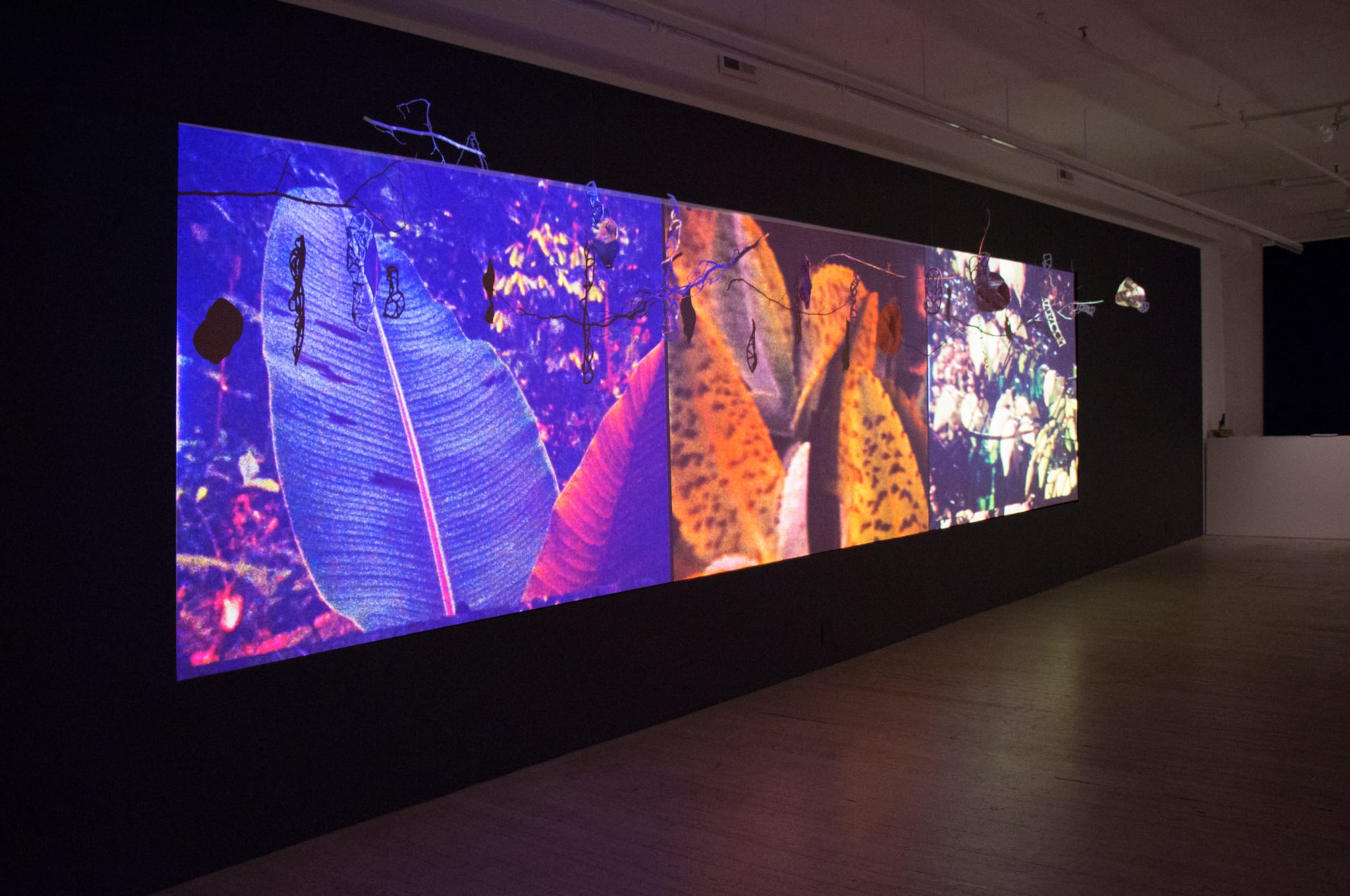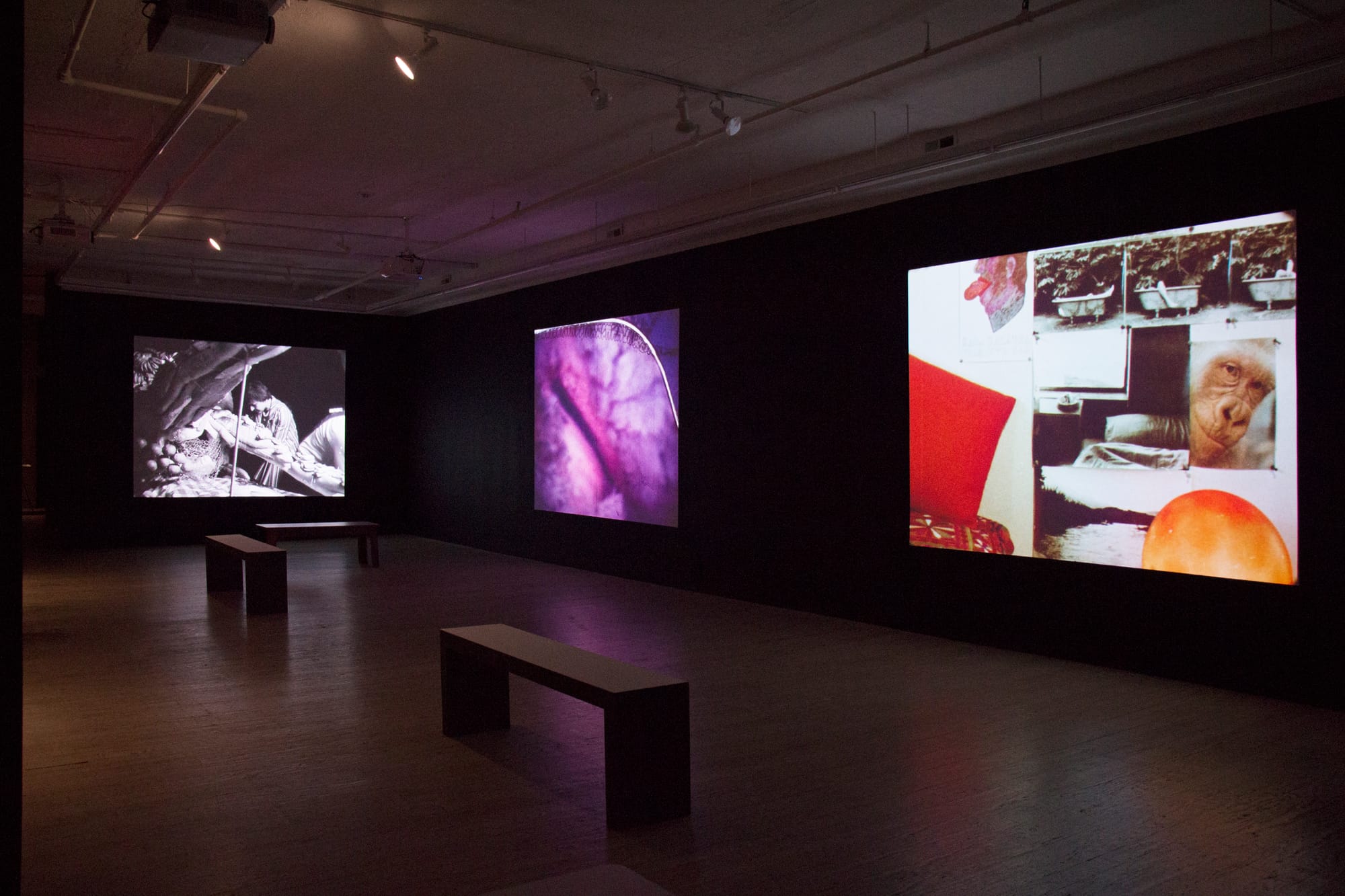
Microscope Gallery is the rare commercial space in New York dedicated to exhibiting the moving image. It was founded by artists-curators Elle Burchill and Andrea Monti to address the long-existing divide between the value conferred on works for gallery spaces and works meant for screening spaces. Their mission is to support the so-called time-based arts, or moving image arts, and the list of artists and estates they represent is an impressive roll call of accomplished practitioners: Peggy Ahwesh, Ayanna Dozier, Narcisa Hirsch, Jonas Mekas among others.
Currently on view at Microscope Gallery is a solo exhibition of the work of Copper Frances Giloth, a groundbreaking computer artist who was active in the 1970s and 1980s. The artist has work in the exhibition Digital Witness: Art and Design: Revolutions in Design, Photography, and Film, currently on view at the Los Angeles County Museum of Art (LACMA). On the occasion of the 15-year anniversary of their space we spoke with Burchill and Monti about the educational nature of their work, the evolving landscape of moving images and why some people still do not believe that film is art.
This year Microscope Gallery celebrates its 15-year anniversary. Looking back, what were the biggest challenges you faced as a gallery? Looking forward, what do you expect your biggest challenges will be in continuing your work?
Since the start we have been dedicated to presenting works by artists whose practice includes moving image — in analog and digital formats — sound, performance, and other so-called time-based arts. We do this in two ways, through a regular exhibition schedule, as well as an event series where we present screenings and live performances, where we include works not necessarily meant to be exhibited but which belong in the same discussion.
The biggest challenge has been and continues to be expanding the understanding of and appreciation for those who make such works as artists, allowing them and their works to receive the same respect and opportunities artists who work in traditional mediums do. People who work in time-based arts think and operate across time and many different mediums.
Our motivation is to position moving image and time-based arts within the main historical discussion about contemporary art, and to show that these works are just as collectable as more traditional art forms. Essentially, we are helping to build a system of support for these works — both institutional and collector-based — to ensure their existence in the future. You would be surprised how many people still to this day adamantly believe that film, for example, is not really art.
We tend to spend a lot of time in what are really educational discussions — even at art fairs — not only about how to collect and preserve such works, but also about other artists to look at, or places to see experimental films, in order to deepen the understanding of these mediums. But we also advise everyone to trust their own instincts. Essentially, that is the motivation that compelled us to start the gallery. There is an irony in that you can find endless images of paintings online, for instance, but it is hard to get access online to experimental films, video art, sound installations, or performances, making it more important that people get out and see the works in person.

What shifts have you seen in moving image art and culture in the past 15 years? How much have galleries or exhibition spaces played a role in the shifts you perceive?
If you had asked us this question in the first few years after we opened, it would be a different answer than what we would say today with the return to painting, materiality and craft that we’ve seen recently. First, we should clarify that we’re not talking about institutional shows as, historically, museums and non-profits have been more open to these types of works than most. In galleries, there was a moment around 2014-2017 in which video, video installation, and digital art was being shown a lot. There was also a vibrant scene of 90 galleries around us in Bushwick [Brooklyn], and many had good-sized spaces which allowed for more risk-taking. There were also young critics that were out writing about these types of works in publications like ArtFCity, L Magazine, and others that are no longer active or stopped covering art.
At the same time we always felt there was a sort of backwards situation in which the best works in film, video, performance, etc. were exhibited in non-traditional and artist-run spaces or smaller galleries, while blue chip galleries — with few exceptions — were often showing artists mainly working in other mediums who made a video for the first time. Or, like seen recently in Chelsea, the videos are documentaries about the exhibited artist and not actual works in the show.
Video has lately found its way into larger institutional settings in situations often described as an immersive experience. Not all video was made to be immersive — such as the many single-channel works that film and video history has produced and that never required an environment surrounding them — yet it seems to be a trend that has been going on for several years now. An experience is more enticing and marketable than a medium. The NFT boom mostly failed to involve meaningful artistic forms of moving image, and was used as a money-making crypto game. An interesting technical development happening now is a gradual shift from video projection and flat screens to the use of LED panels and video walls.

The Platform section on your site is a space dedicated to digital art. Can you speak more about your vision for this online space and for the inclusion of digital art in your program?
Platform is dedicated to digital works that are net-based or made for online viewing, but not exclusively. The intersection of digital art and time-based art such as moving image is so crucial and connected with the present time and its evolving technologies that we decided to dedicate more time and space in our programming. Stay tuned for our upcoming exhibitions at the gallery!

New York City has an embarrassment of riches in art and culture. Where do you find yourself often returning to see the exhibited moving image done in thoughtful and imaginative ways?
More than the venue, perhaps this is more dependent on the artist or the specific show and its curators. The Whitney Museum, specifically the shows curated by Chrissie Isles and Christiane Paul are extremely well-researched and presented. There is The Kitchen, of course, Artist Space, Smack Mellon and BRIC in Brooklyn, which are venues we return to for their very thoughtful shows. As for galleries, there were more regularly presenting such work prior to Covid, and those such as Foxy Production, Signal, Team and Postmasters have closed in the past few years.
Artist studios are also a great place to be inspired by the moving image. Grandiose exhibition spaces and spectacular displays, as impressive as they can be, tend to lack imagination in our experience. However, three very thoughtful shows of moving image and digital art that we have seen recently were Ho Tzu Nyen’s exhibition at CCS Bard in New York, Digital Witness at Los Angeles County Museum of Art, and MACHINE LOVE at Mori Art Museum in Tokyo.

In founding Microscope Gallery your stated mission was to address the long-existing divide between the value conferred on works for gallery spaces and works for screening spaces. If it was already long-existing 15 years ago, and if it still exists 15 years later, how do you envision the art world bridging this divide in the near future?
The divide we are talking about is deep and reaches back to a strict compartmentalization of art — into fine art, cinema, music, etc. — found in schools and replicated in museum departments and art magazines, then followed by the larger system of galleries and collectors.
The separation does still exist despite continuous crossovers, as technology-based works and performance have significantly impacted artists using traditional mediums and the general discourse in art since their inception. Regardless of the art world’s resistance, these art forms are here to stay, and as technology evolves there will always continue to be new ones as well.
We recently saw a video from a computer art exhibition in 1982, in which artists in the show were being interviewed. Stan VanDerBeek talked about how it took 75 years for photography to begin to be accepted, and he joked that if one was smart one would start collecting computer art right then. But, exhibition by exhibition, and event by event, we are signaling that there is a vast change that is already in process and is inevitable, as we try to shorten the time it takes for the world to embrace it. Perhaps such a shift is not very noticeable within 15 years, but in the longer term eventually what is misunderstood or rejected is seen for what it is.
